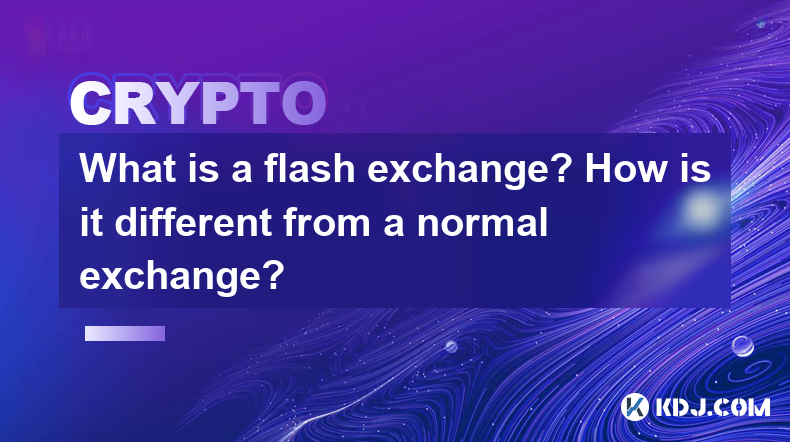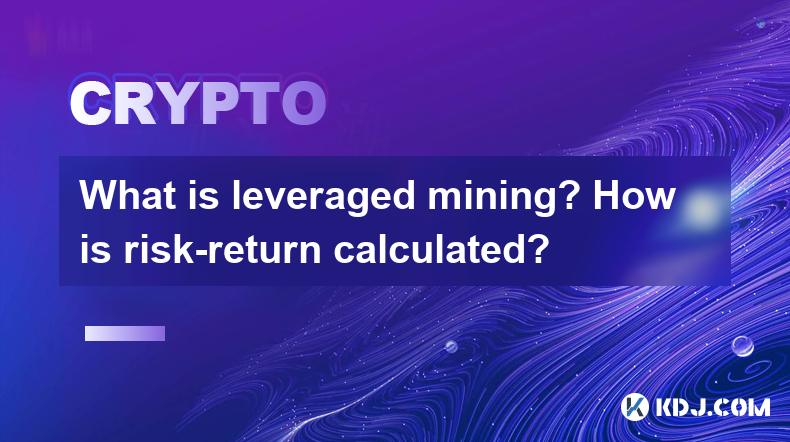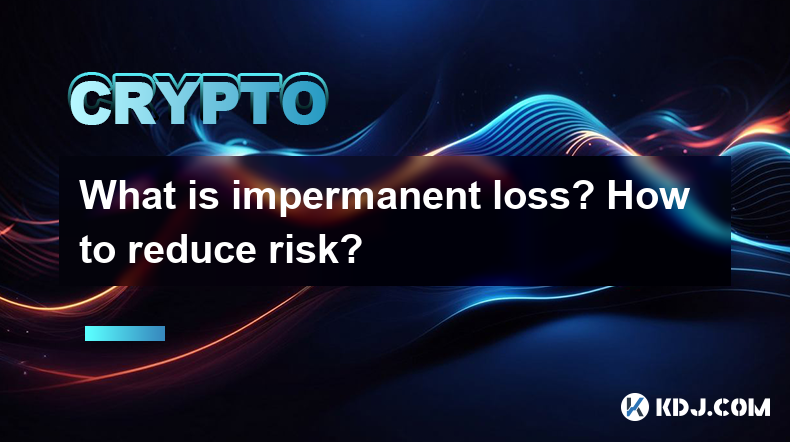-
 Bitcoin
Bitcoin $84,380.9629
-0.68% -
 Ethereum
Ethereum $1,587.8040
0.39% -
 Tether USDt
Tether USDt $0.9997
0.02% -
 XRP
XRP $2.0611
-0.10% -
 BNB
BNB $592.1695
0.41% -
 Solana
Solana $134.0171
-0.42% -
 USDC
USDC $1.0000
0.00% -
 Dogecoin
Dogecoin $0.1576
1.44% -
 TRON
TRON $0.2401
-3.06% -
 Cardano
Cardano $0.6295
2.16% -
 UNUS SED LEO
UNUS SED LEO $9.2244
1.69% -
 Chainlink
Chainlink $12.5592
0.40% -
 Avalanche
Avalanche $19.0618
0.03% -
 Toncoin
Toncoin $2.9920
1.85% -
 Stellar
Stellar $0.2398
0.17% -
 Shiba Inu
Shiba Inu $0.0...01228
4.28% -
 Hedera
Hedera $0.1653
1.46% -
 Sui
Sui $2.1201
-0.04% -
 Bitcoin Cash
Bitcoin Cash $335.2957
0.47% -
 Polkadot
Polkadot $3.6693
0.93% -
 Litecoin
Litecoin $75.9657
1.55% -
 Hyperliquid
Hyperliquid $17.0326
-0.70% -
 Dai
Dai $1.0000
0.01% -
 Bitget Token
Bitget Token $4.4071
0.71% -
 Ethena USDe
Ethena USDe $0.9992
0.02% -
 Pi
Pi $0.6423
4.69% -
 Monero
Monero $215.4419
-0.65% -
 Uniswap
Uniswap $5.1801
0.13% -
 Pepe
Pepe $0.0...07322
1.11% -
 OKB
OKB $50.2807
-0.70%
What is a flash exchange? How is it different from a normal exchange?
Flash exchanges enable instant, collateral-free trades using DeFi, allowing traders to exploit arbitrage without upfront capital, all within a single blockchain transaction.
Apr 16, 2025 at 03:43 pm

A flash exchange, also known as a flash swap, is a relatively new concept within the cryptocurrency space that has gained significant attention due to its innovative approach to trading. Unlike traditional exchanges, flash exchanges leverage the power of decentralized finance (DeFi) protocols to enable instant, collateral-free trades. In this article, we will delve deep into what a flash exchange is, how it functions, and how it differs from a normal exchange.
Understanding the Basics of Flash Exchanges
A flash exchange operates on the principle of atomicity, meaning that the entire transaction either completes successfully or fails entirely, leaving no residual impact on the blockchain. This concept is made possible through smart contracts, which are self-executing contracts with the terms of the agreement directly written into code. These smart contracts facilitate the exchange of assets between parties without the need for intermediaries.
The core idea behind a flash exchange is to allow traders to borrow assets from a liquidity pool, execute a trade, and then repay the borrowed amount within the same transaction. If the trader fails to repay the borrowed assets, the entire transaction is reverted, ensuring that the liquidity pool remains unaffected. This mechanism enables traders to exploit arbitrage opportunities without the need for upfront capital.
How Flash Exchanges Work
To understand how a flash exchange works, let's walk through a typical flash swap scenario:
- Initiate the Flash Swap: A trader initiates a flash swap by calling a function on a smart contract that manages the liquidity pool. This function allows the trader to borrow an asset from the pool without providing any collateral.
- Execute the Trade: The trader then uses the borrowed asset to execute a trade on another decentralized exchange (DEX). The goal is often to exploit price discrepancies between different platforms.
- Repay the Loan: After the trade, the trader must repay the borrowed asset, plus any associated fees, to the liquidity pool within the same transaction. If the repayment is successful, the transaction is completed, and the trader profits from the arbitrage opportunity.
- Transaction Reversion: If the trader fails to repay the borrowed asset, the entire transaction is reverted, and the liquidity pool remains unchanged.
This process happens in a single transaction, ensuring that the liquidity pool is never at risk. The atomic nature of flash swaps makes them a powerful tool for traders looking to capitalize on market inefficiencies.
Differences Between Flash Exchanges and Normal Exchanges
While flash exchanges and normal exchanges both facilitate the trading of cryptocurrencies, there are several key differences between the two:
1. Collateral Requirements
- Flash Exchanges: Do not require any collateral. Traders can borrow assets from a liquidity pool and repay them within the same transaction.
- Normal Exchanges: Typically require traders to deposit funds or assets as collateral before executing trades. This collateral acts as a safeguard against potential losses.
2. Speed and Efficiency
- Flash Exchanges: Transactions are executed instantly within a single blockchain transaction. This speed allows traders to capitalize on fleeting arbitrage opportunities.
- Normal Exchanges: Transactions may take longer to process, especially if they involve multiple steps or require manual intervention. This can result in missed opportunities for traders.
3. Risk Management
- Flash Exchanges: The risk is managed through the atomic nature of the transactions. If a trader fails to repay the borrowed assets, the transaction is reverted, and the liquidity pool remains unaffected.
- Normal Exchanges: Risk management often involves setting stop-loss orders or using margin calls to limit potential losses. However, these mechanisms are not as instantaneous as the atomic transactions of flash exchanges.
4. Accessibility
- Flash Exchanges: Accessible to anyone with a basic understanding of smart contracts and DeFi protocols. No need for a centralized intermediary.
- Normal Exchanges: Often require users to go through a registration process, complete KYC (Know Your Customer) verification, and adhere to specific trading rules set by the exchange.
Benefits of Using Flash Exchanges
Flash exchanges offer several advantages that make them an attractive option for traders:
- No Capital Requirement: Traders can execute trades without needing to provide upfront capital, making it easier to exploit arbitrage opportunities.
- Instant Execution: The atomic nature of flash swaps ensures that trades are executed instantly, allowing traders to capitalize on fleeting market inefficiencies.
- Reduced Risk: The risk of losing borrowed assets is mitigated by the transaction reversion mechanism, ensuring that the liquidity pool remains secure.
- Decentralized Nature: Flash exchanges operate on decentralized platforms, reducing the reliance on centralized intermediaries and enhancing user privacy.
Potential Risks and Considerations
While flash exchanges offer numerous benefits, there are also potential risks and considerations that traders should be aware of:
- Smart Contract Vulnerabilities: The security of flash exchanges depends on the robustness of the underlying smart contracts. Any vulnerabilities in the code could be exploited by malicious actors.
- Market Volatility: The success of a flash swap often depends on the ability to exploit price discrepancies. High market volatility can increase the risk of unsuccessful trades.
- Gas Fees: Executing flash swaps on blockchain networks like Ethereum can incur significant gas fees, which can eat into potential profits.
- Complexity: Understanding and executing flash swaps requires a certain level of technical knowledge and familiarity with DeFi protocols.
Practical Example of a Flash Swap
To illustrate how a flash swap works in practice, let's consider a hypothetical scenario:
- Scenario: A trader notices that Token A is trading at a lower price on DEX 1 compared to DEX 2. The trader wants to exploit this price discrepancy to make a profit.
- Execution:
- The trader initiates a flash swap on DEX 1, borrowing Token A from the liquidity pool.
- The trader then sells Token A on DEX 2 at a higher price, converting it to Token B.
- The trader uses Token B to buy back Token A on DEX 1 at a lower price.
- The trader repays the borrowed Token A to the liquidity pool on DEX 1, along with any associated fees.
- If the repayment is successful, the trader profits from the price difference between the two DEXs.
This example demonstrates how flash swaps can be used to exploit arbitrage opportunities in a decentralized manner.
Frequently Asked Questions
Q1: Can flash exchanges be used for any type of cryptocurrency?
A1: Flash exchanges can be used for any type of cryptocurrency that is supported by the underlying DeFi protocol and liquidity pool. However, the availability of specific tokens may vary depending on the platform.
Q2: Are flash exchanges regulated?
A2: Flash exchanges operate on decentralized platforms and are not subject to the same regulatory oversight as traditional centralized exchanges. However, users should be aware of the legal and regulatory environment in their jurisdiction when using these services.
Q3: How can I protect myself from smart contract vulnerabilities when using flash exchanges?
A3: To protect yourself from smart contract vulnerabilities, it's essential to conduct thorough research on the DeFi platform and the smart contracts involved. Look for platforms that have undergone security audits by reputable firms and have a strong track record of reliability.
Q4: Can flash exchanges be used for purposes other than arbitrage?
A4: While flash exchanges are commonly used for arbitrage, they can also be utilized for other purposes, such as liquidating positions or rebalancing portfolios. The flexibility of flash swaps allows traders to execute complex strategies within a single transaction.
Disclaimer:info@kdj.com
The information provided is not trading advice. kdj.com does not assume any responsibility for any investments made based on the information provided in this article. Cryptocurrencies are highly volatile and it is highly recommended that you invest with caution after thorough research!
If you believe that the content used on this website infringes your copyright, please contact us immediately (info@kdj.com) and we will delete it promptly.
- 5 Cryptos That Aren't Sleeping Anymore. From Wall Street Warming Up to Tokenized Assets
- 2025-04-19 07:20:13
- Litecoin (LTC) Returns to Familiar 10x Territory: How High Could It Go This Time?
- 2025-04-19 07:20:13
- Hashkey Group is Moving to Increase its Presence in the Growing ETF Market of Asia. By Launching an XRP-Targeted Fund
- 2025-04-19 07:15:13
- Berachain (BERA) Price Crashes to a Record Low as Stablecoins in Its Ecosystem Continue Their Recent Plunge
- 2025-04-19 07:15:13
- United States asset manager Canary Capital has filed to list an exchange-traded fund (ETF) holding the Tron blockchain network's native token
- 2025-04-19 07:10:13
- XRP price hovers above $2.08 as traders weigh conflicting signals from spot and derivatives markets, suggesting short-term indecision.
- 2025-04-19 07:10:13
Related knowledge

What is impermanent loss insurance? What are the solutions?
Apr 12,2025 at 01:14am
What is Impermanent Loss Insurance? What are the Solutions? Impermanent loss is a significant concern for liquidity providers in decentralized finance (DeFi) platforms. It occurs when the price of tokens in a liquidity pool changes compared to when they were deposited, leading to a potential loss if the provider decides to withdraw their liquidity. To m...

What are algorithmic stablecoins? How do they maintain anchoring?
Apr 12,2025 at 11:35am
Algorithmic stablecoins represent a fascinating and innovative segment within the cryptocurrency ecosystem. These digital assets are designed to maintain a stable value, typically pegged to a fiat currency like the US dollar, through the use of algorithms rather than traditional collateral. This approach distinguishes them from other types of stablecoin...

What is leveraged mining? How is risk-return calculated?
Apr 11,2025 at 04:07pm
What is Leveraged Mining? How is Risk-Return Calculated? Leveraged mining is a strategy used in the cryptocurrency space where miners borrow funds to increase their mining capacity and potential returns. This approach can amplify both profits and losses, making it a high-risk, high-reward endeavor. Understanding how to calculate the risk and return asso...

What is an aggregator? How does 1inch optimize transaction paths?
Apr 12,2025 at 05:00pm
An aggregator in the cryptocurrency space is a tool that compiles and compares data from multiple decentralized exchanges (DEXs) to find the best possible trading routes and prices for users. Aggregators are essential for traders looking to optimize their transactions, as they can automatically search through various liquidity sources to ensure the most...

What is a flash exchange? How is it different from a normal exchange?
Apr 16,2025 at 03:43pm
A flash exchange, also known as a flash swap, is a relatively new concept within the cryptocurrency space that has gained significant attention due to its innovative approach to trading. Unlike traditional exchanges, flash exchanges leverage the power of decentralized finance (DeFi) protocols to enable instant, collateral-free trades. In this article, w...

What is impermanent loss? How to reduce risk?
Apr 16,2025 at 11:14pm
What is Impermanent Loss? How to Reduce Risk? Impermanent loss is a term that frequently surfaces in the world of decentralized finance (DeFi), particularly when discussing liquidity provision on automated market makers (AMMs) like Uniswap or SushiSwap. Understanding this concept is crucial for anyone looking to engage in liquidity provision, as it dire...

What is impermanent loss insurance? What are the solutions?
Apr 12,2025 at 01:14am
What is Impermanent Loss Insurance? What are the Solutions? Impermanent loss is a significant concern for liquidity providers in decentralized finance (DeFi) platforms. It occurs when the price of tokens in a liquidity pool changes compared to when they were deposited, leading to a potential loss if the provider decides to withdraw their liquidity. To m...

What are algorithmic stablecoins? How do they maintain anchoring?
Apr 12,2025 at 11:35am
Algorithmic stablecoins represent a fascinating and innovative segment within the cryptocurrency ecosystem. These digital assets are designed to maintain a stable value, typically pegged to a fiat currency like the US dollar, through the use of algorithms rather than traditional collateral. This approach distinguishes them from other types of stablecoin...

What is leveraged mining? How is risk-return calculated?
Apr 11,2025 at 04:07pm
What is Leveraged Mining? How is Risk-Return Calculated? Leveraged mining is a strategy used in the cryptocurrency space where miners borrow funds to increase their mining capacity and potential returns. This approach can amplify both profits and losses, making it a high-risk, high-reward endeavor. Understanding how to calculate the risk and return asso...

What is an aggregator? How does 1inch optimize transaction paths?
Apr 12,2025 at 05:00pm
An aggregator in the cryptocurrency space is a tool that compiles and compares data from multiple decentralized exchanges (DEXs) to find the best possible trading routes and prices for users. Aggregators are essential for traders looking to optimize their transactions, as they can automatically search through various liquidity sources to ensure the most...

What is a flash exchange? How is it different from a normal exchange?
Apr 16,2025 at 03:43pm
A flash exchange, also known as a flash swap, is a relatively new concept within the cryptocurrency space that has gained significant attention due to its innovative approach to trading. Unlike traditional exchanges, flash exchanges leverage the power of decentralized finance (DeFi) protocols to enable instant, collateral-free trades. In this article, w...

What is impermanent loss? How to reduce risk?
Apr 16,2025 at 11:14pm
What is Impermanent Loss? How to Reduce Risk? Impermanent loss is a term that frequently surfaces in the world of decentralized finance (DeFi), particularly when discussing liquidity provision on automated market makers (AMMs) like Uniswap or SushiSwap. Understanding this concept is crucial for anyone looking to engage in liquidity provision, as it dire...
See all articles
























































































